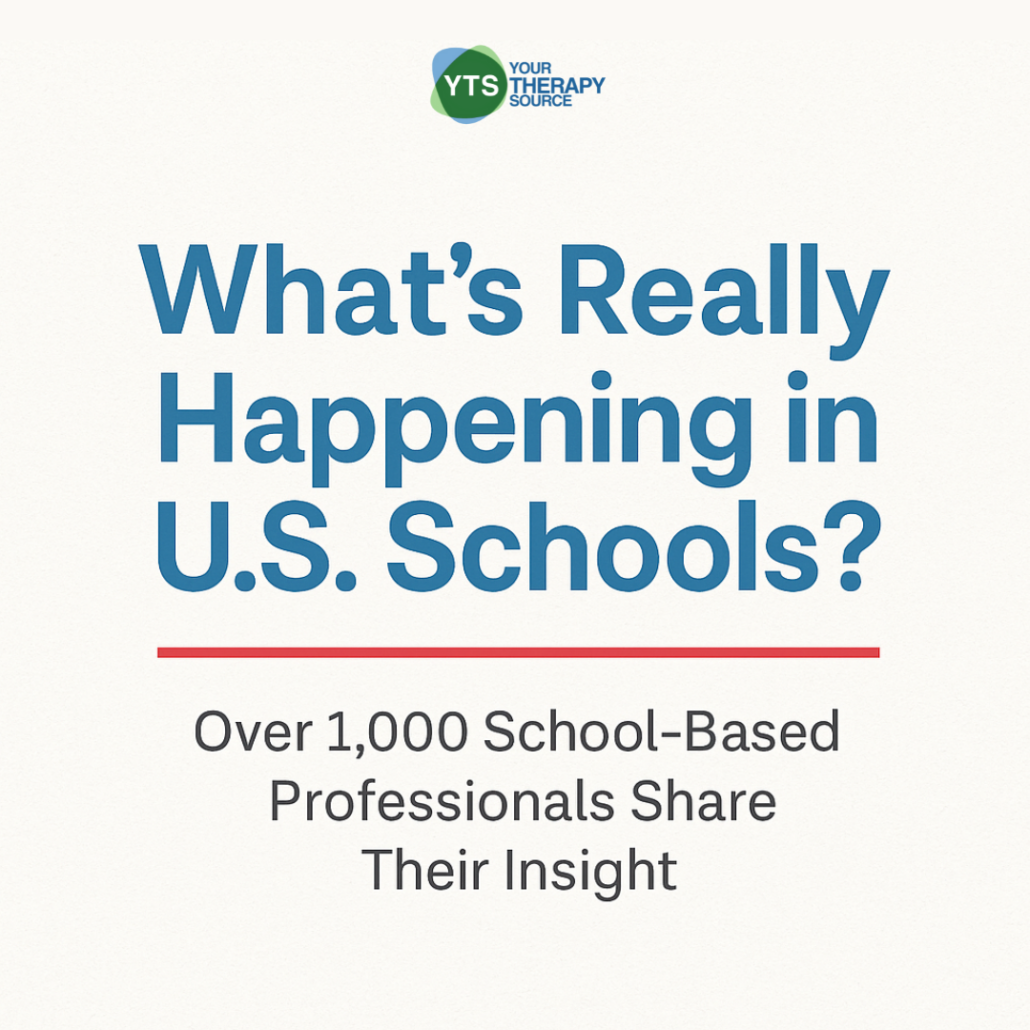School Trends 2025: National Insights from 1,027 School-Based Professionals
In Spring of 2025, Your Therapy Source conducted a national survey to better understand current trends in U.S. schools from the perspective of school-based occupational therapy providers, physical therapy providers, speech-language pathologists (SLPs), and teachers. A total of 1,027 professionals responded to the school trends survey, offering a rich dataset highlighting where students are struggling most, why service referrals are increasing, and what changes schools must consider to better support student success.
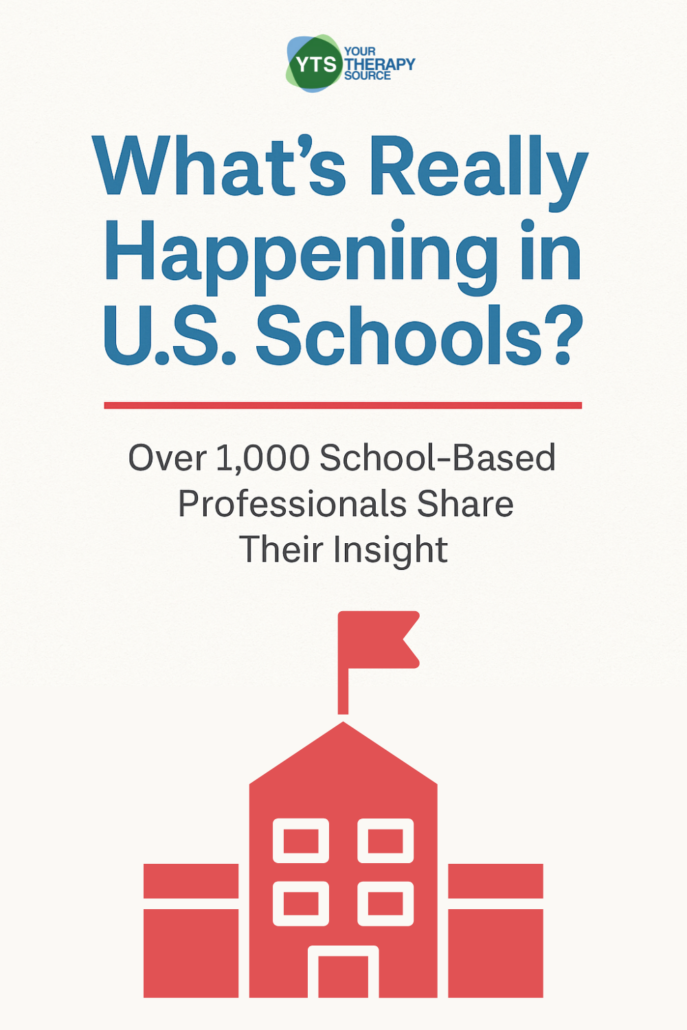
Who Responded to the School Trends 2025 Survey?
This report is based on data collected through a Google Form survey that was open for approximately two weeks in Spring 2025. The survey was shared with subscribers of the Your Therapy Source email newsletter and promoted on Facebook to reach a wide range of school-based professionals across the United States. A total of 1,027 responses were collected, offering valuable insight from occupational therapists, physical therapists, speech-language pathologists, and teachers working in diverse educational settings.
Respondents represented a range of school-based roles:
| Job Title | % of Total Responses |
|---|---|
| School-Based Occupational Therapist | 50.7% |
| Teacher | 12.8% |
| School-Based COTA | 9.8% |
| School-Based Physical Therapist | 6.4% |
| Social Worker | 3.9% |
| Other (e.g., SLPs, administrators) | Remaining % |

Referral Trends: A Steady Increase
When asked how referral trends compared to previous years:
- 63.2% of professionals reported an increase in referrals:
- 25.8% reported significantly more
- 37.4% reported slightly more referrals
- 31.5% indicated referral levels remained about the same
- Only 5.2% noted fewer than previous years
This indicates a substantial shift in how schools are responding to student needs, with many professionals feeling the strain of increased service demands.

Top Student Struggles in 2024–2025
Respondents were asked to select up to three areas where students struggled most. These findings suggest that self regulation skills, attention span and executive functioning skills are at the forefront of current school challenges, more than academic performance alone. The most commonly selected challenges were:
| Student Challenge | % of Selections |
|---|---|
| Self-regulation skills | 74.2% |
| Attention span | 45.9% |
| Executive functioning | 41.2% |
| Fine motor skills | 38% |
| Sensory processing | 26.8% |
| Social participation | 23.7% |
| Academics | 11.4% |
| Visual Perceptual Skills | 10.6% |
| Gross motor skills | 5.1% |
Some professionals responded other and typed in responses such as handwriting challenges, behaviors, emotional regulation
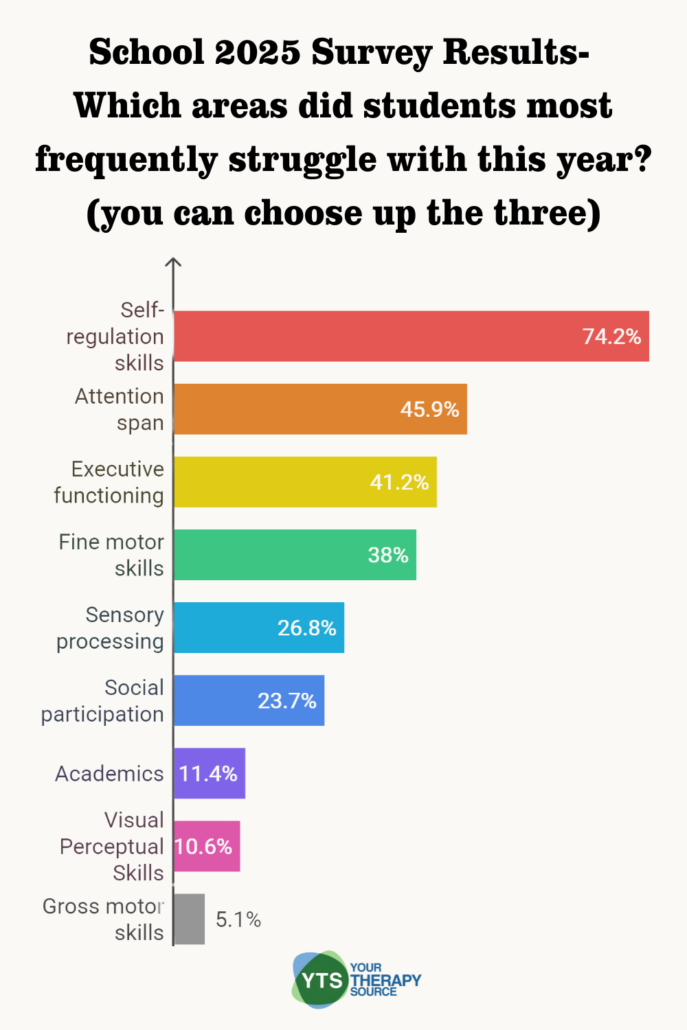
School Trends 2025 – Why Are Referrals Increasing?
Participants selected up to two reasons why referrals are rising. The most frequently cited causes were:
| Reason for Referral | % of Selections |
|---|---|
| More students with emotional or sensory regulation challenges | 51.2% |
| Increased screen time | 50.2% |
| Delays due to early childhood expereinces | 29.9% |
| Decreased play and movement time in school | 22.5% |
| Increased academic expectations in early grades | 15.3% |
| Increased teacher awareness of special education needs | 8.5% |
| Environmental or classroom structure challenges | 7% |
Some responses were OTHER and responders typed in answers such as decreased parental involvement, decreased exposure to motor skills, etc.
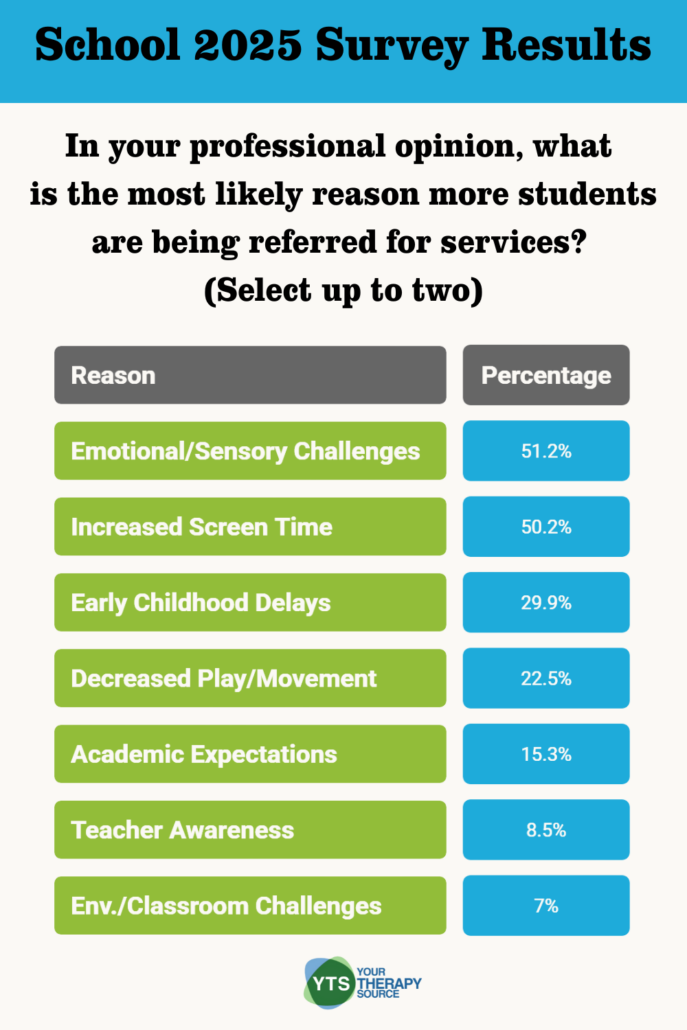
What Systemic Changes Are Needed?
When asked If you could make ONE systemic change to better support students’ participation and development next school year, what would it be? These were the most frequently suggested solutions:
| Suggested Systemic Change | % of Responses |
|---|---|
| More time for play and hands-on learning | 24.8% |
| Reduce academic demands in early grades | 16.8% |
| Train school staff on developmental expectations | 11.9% |
| Increase access to movement and sensory breaks | 11.5% |
| Offer more social emotional support | 10.2% |
| Increase focus on functional life skills | 9.4% |
| Increase collaboration with staff and parents | 9.2% |
| Other | 6.2% |
Responses in the OTHER selection included examples such as: decrease mandated testing, reduce classroom sizes, increase connection with parents, etc.
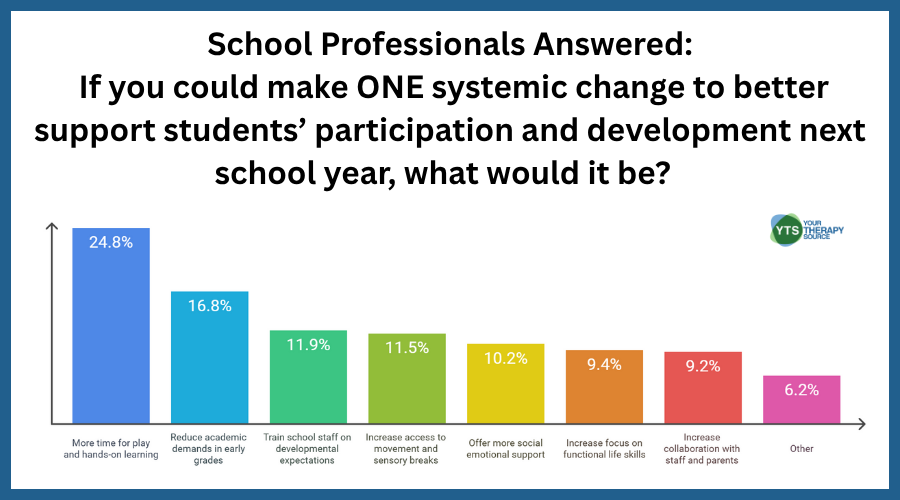
What Should Schools Prioritize in 2025–2026?
These priorities signal a shift toward strengthening core self-regulation, cognitive, and social-emotional skills as the foundation for academic progress. Participants were asked to choose one key area schools should focus on to support student success next year:
| Priority Area | % of Respondents |
|---|---|
| Emotional and self-regulation skills | 31.4% |
| Attention and executive functioning | 23.8% |
| Fine motor and handwriting readiness | 13.9% |
| Social skills and peer interaction | 8.9% |
| Sensory-friendly classroom environments | 8.5% |
| Mental Health | 6.5% |
| Digital literacy and healthy technology use | 1.8% |
| Academics | 1.5% |
| OTHER | 5.2% |
Other responses included suggestions such as educating parents, attendance, more gross motor skills, etc.
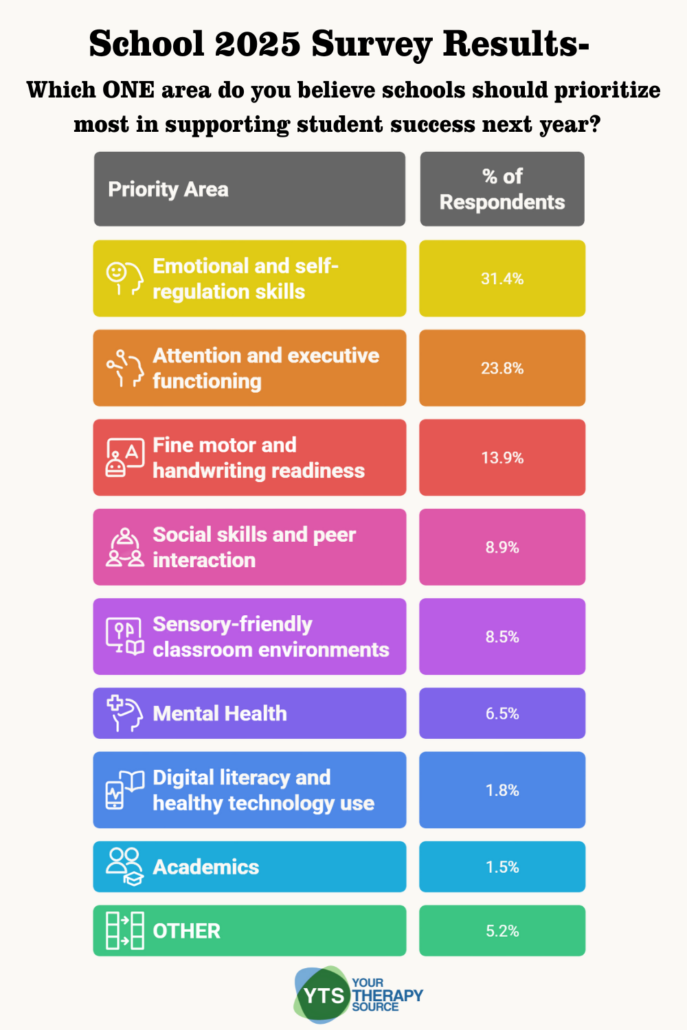
A Call to Support the Whole Child
The School Trends 2025 data show that the rising needs in schools are not primarily academic. They are developmental. Students are struggling with the emotional regulation, attention, and sensory readiness required to succeed in today’s classroom environments.
Educators and therapists are united in their call for:
- Play-based and movement-rich learning environments
- Reduced pressure in early academic years
- Systemic supports that promote self-regulation and participation
- Stronger interdisciplinary collaboration
This data underscores the urgent need to adjust school systems to meet students where they are and give them the support they need to succeed.
